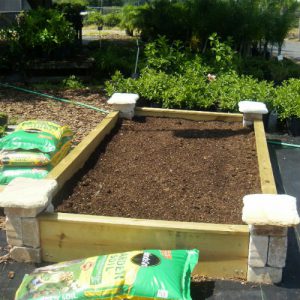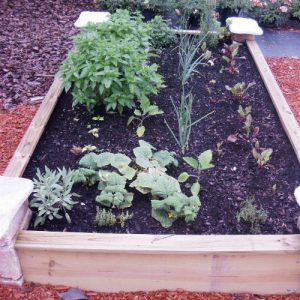If your garden is like mine, it’s a jungle by now. But there are things we can do to prepare for the more temperate upcoming veggie plot.

First, soil solarization: You clear the spot where you want your fall garden, weed and rake, add organic amendments (such as herbivore manure), add inorganic amendments (micro-minerals are great), and water thoroughly. Then you cover the garden with a heavy sheet of clear plastic. Be sure to place bricks, or a layer of soil around the edges so the wind can’t pick it up. Over the next six weeks, the sun will heat the soil, killing weed seeds, nematodes, and insect eggs. Then, when you are ready, you pull off the plastic, fold it away for future use, and plant WITHOUT disturbing the top layer of soil.
If your soil is pretty healthy, try this: Clear the spot for your garden, rake and amend the soil, then cover it with a thick layer of paper. (Cardboard or newspapers work well.) Wet the paper and top it with 8 to 10 inches of straw, sometimes called ‘salt hay’. When you’re ready to plant, simply cut a hole in the cardboard (now partially decayed) and slip the vegetable into the soil below.
A third method is called green manure. Again, you clear the garden spot and rake the soil. This time, however, you thickly (1 inch apart) sow legume seeds (such as black-eyed peas.). (You’ll need several pounds of seeds.) After the plants are 12 to 18 inches high, you cut them down and till the green plants into the soil. They’ll decay quickly into your soil.

Any of these methods will make your fall garden easier to keep up and more productive. I can taste the lettuce already!
For more information on growing vegetables, or about specific plants, please look online at edis.ifas.ufl.edu, call the UF/IFAS Extension Polk County Plant Clinic at 863-519-1041, or drop us a note at polkmg@ifas.ufl.edu.
This article was written by Celia Beamish, Florida Master Gardener Volunteer under supervision of the Master Gardener Coordinator and Residential Horticulture Agent Anne Yasalonis. Celia has been a Florida Master Gardener Volunteer since 2008.
The Florida Master Gardener Program is a volunteer-driven program that benefits UF/IFAS Extension and the citizens of Florida. The program extends the vision of the University of Florida/Institute of Food and Agricultural Sciences, all the while protecting and sustaining natural resources and environmental systems, enhancing the development of human resources, and improving the quality of human life through the development of knowledge in agricultural, human and natural resources and making that knowledge accessible.
An Equal Opportunity Institution.
 0
0
